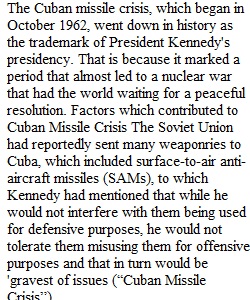


Q Once you have reviewed the professor's feedback on your outline, your peer review comments, and completed all steps in the Reporting Information Essay Instructions, submit your revised essay as a .pdf or .docx. In the comment box, answer this reflection question: What surprised you about the process of writing the Reporting Information Essay? Essays cannot be submitted after the assignment closes except in the case of documentable emergencies and written instructor approval. Rubric Some Rubric Some Rubric Criteria Ratings Pts This criterion is linked to a Learning OutcomeIdeas + Focus 20 to >18.0 pts Strong The essay has a clear thesis which controls the entire paper. The ideas are significant and insightful. 18 to >13.0 pts Good The essay has a thesis which guides the entire paper. The ideas are relevant, but do not illustrate new ideas. 13 to >6.0 pts Average The essay is not completely controlled by one central point. The ideas may lack insight or significance. 6 to >0.0 pts Weak The essay is not clearly controlled by one central point. There is little attempt to express critical (collegiate-level) ideas. 0 pts Very Weak Incomplete 20 pts This criterion is linked to a Learning OutcomeDevelopment + Support 20 to >18.0 pts Strong The essay’s ideas are clearly and logically developed. Major ideas are explained through concrete, specific details, or examples. 18 to >13.0 pts Good The essay’s ideas are well developed. Major ideas are explained through specific details, or examples, but may lack thoroughness and/or clarity at times. 13 to >6.0 pts Average Major ideas are well developed as a whole, but with occasional problems in support, explanation, or accuracy. Use of examples is present, but minimal explanation is offered to interpret their significance. 6 to >0.0 pts Weak The development of major ideas is lacking or confusing. Major ideas are barely supported or merely repeated. Flaws in logic. 0 pts Very Weak Incomplete 20 pts This criterion is linked to a Learning OutcomeOrganization 10 to >6.0 pts Strong Organization is clear and logical. Transitions effectively signal relationships among the essay’s parts. Introduction is gripping. Conclusion provides for new insight. Overall structure feels deliberately crafted. 6 to >4.0 pts Good Organization is clear. Uses appropriate transitions. Introduction is effective. Conclusion adequately wraps up ideas. Overall structure feels deliberately crafted. 4 to >2.0 pts Average The organizational structure is strong enough to move the reader through the text without too much confusion. Some transitions are present, but awkward at times. Intro/conclusion may be overly simplistic. 2 to >0.0 pts Weak The writing lacks a clear sense of direction. Ideas, details, or events seem strung together in a loose or random fashion. There is no identifiable internal structure. Intro/conclusion doesn’t draw reader in or provide insight. 0 pts Very Weak Incomplete 10 pts This criterion is linked to a Learning OutcomeRequirements 10 to >6.0 pts Strong Essay answers the prompt exceptionally well. Meets word count, without going over or under. Exceeds research requirements. 6 to >4.0 pts Good Essay answers the prompt well. Meets word count, without going over or under. Meets research requirements. 4 to >2.0 pts Average Essay answers the prompt. Word count may be over or under by less than 100 words. Meets minimum research requirements. 2 to >0.0 pts Weak Essay attempts to answer the prompt, but may stray off topic. Below or above the word count by more than 100 words. Does not meet research requirements. 0 pts Very Weak Incomplete 10 pts This criterion is linked to a Learning OutcomeGrammar 20 to >18.0 pts Strong The writer demonstrates a good grasp of standard writing conventions. Errors tend to be so few that just minor touch-ups would get this piece ready to publish. 18 to >13.0 pts Good The writer demonstrates a grasp of standard writing conventions. Errors are more frequent, but a few major touch-ups would get this piece ready to publish. 13 to >6.0 pts Average The writer shows reasonable control over a limited range of standard writing conventions. Errors in conventions sometimes are distracting and impair readability. 6 to >0.0 pts Weak Errors in spelling, punctuation, capitalization, usage, and grammar distract the reader and make the text difficult to read. 0 pts Very Weak Incomplete 20 pts This criterion is linked to a Learning OutcomeMLA-- Paper formatting 5 to >3.0 pts Strong Follows all paper formatting guidelines, including heading, header, title, margins, font type and size, indentation, and spacing. 3 to >2.0 pts Good Follows most paper formatting guidelines, including heading, header, title, margins, font type and size, indentation, and spacing. Errors are minor. 2 to >1.0 pts Average Attempts to follow paper formatting guidelines, including heading, header, title, margins, font type and size, indentation, and spacing. Errors are major and/or frequent. 1 to >0.0 pts Weak Makes little or no attempt to follow paper formatting guidelines, including heading, header, title, margins, font type and size, indentation, and spacing. Errors are both major and frequent. 0 pts Very Weak Incomplete 5 pts This criterion is linked to a Learning OutcomeMLA-- In-text Citations 5 to >3.0 pts Strong All correct formats. 3 to >2.0 pts Good Mostly correct formats 2 to >1.0 pts Average A few incorrect formats. 1 to >0.0 pts Weak Many incorrect formats. 0 pts Very Weak Incomplete 5 pts This criterion is linked to a Learning OutcomeMLA-- Works Cited 10 to >6.0 pts Strong Correct line spacing, margins, hanging indents, entry content 6 to >4.0 pts Good Mostly correct content entry. 4 to >2.0 pts Average errors in line spacing, margins, hanging indents; many errors in entry content 2 to >0.0 pts Weak Majority of errors in formatting, entries, and alphabetical order. 0 pts Very Weak Incomplete 10 pts Total Points: 100 PreviousNext
View Related Questions